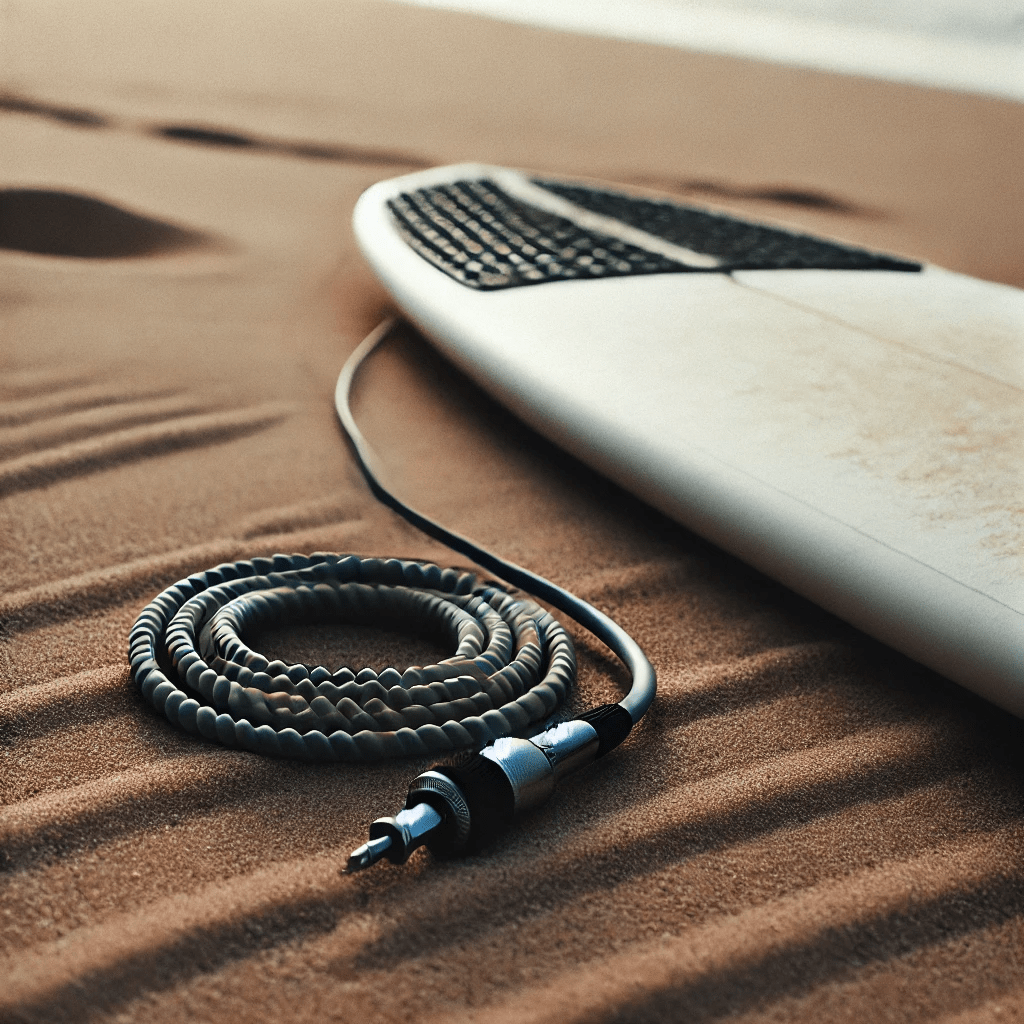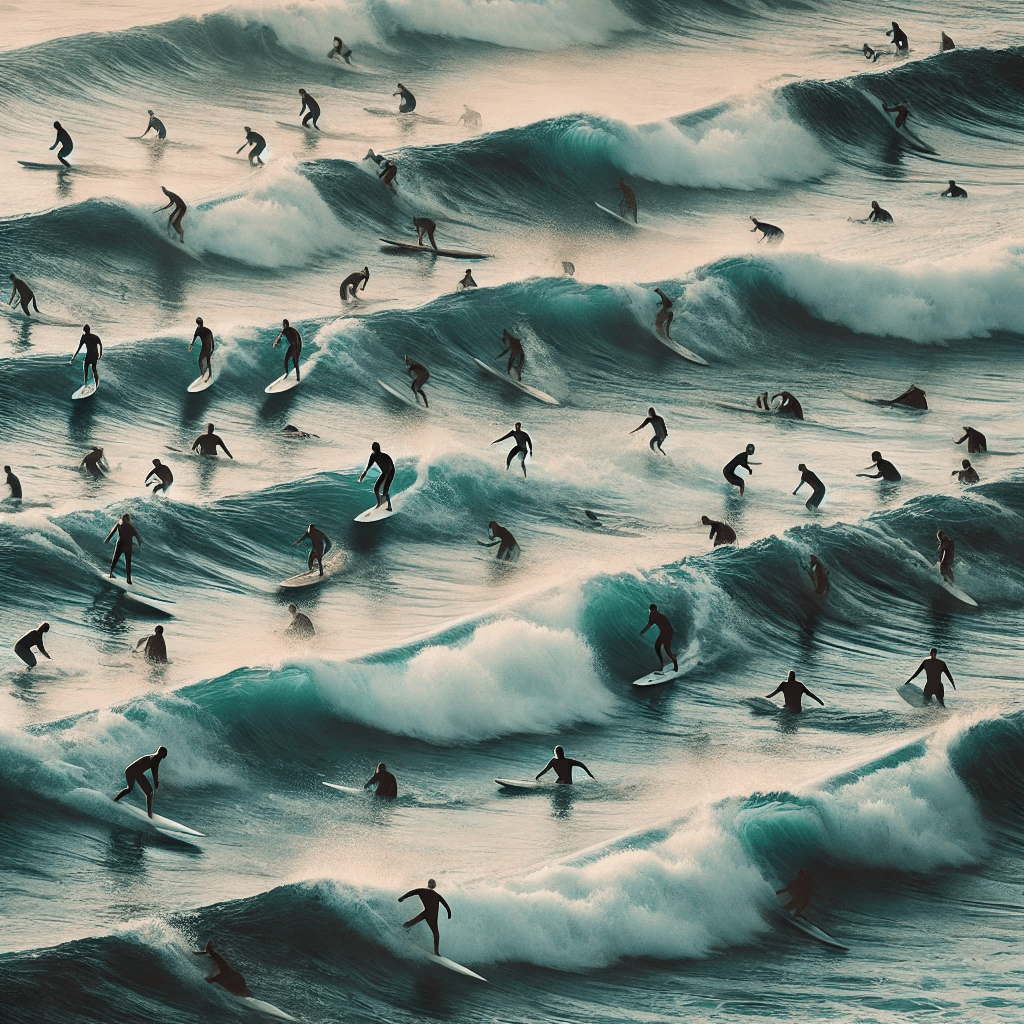What Is a Kook in Surfing? Your Best Guide in 2025
If you’re venturing into the exhilarating world of surfing, one of the first terms you’ll come across is “kook.” But what is a kook in surfing? This term is often used in the surfing community to describe someone inexperienced, ignorant of surfing etiquette, or simply unaware of the cultural norms that surfers abide by. Understanding what is a kook in surfing is crucial for anyone looking to avoid the mistakes that can lead to embarrassment or worse, danger in the water.

What Is a Kook in Surfing?
When we ask what is a kook in surfing, we’re talking about a person who, despite their enthusiasm for surfing, lacks the essential skills or knowledge to navigate the sport safely and respectfully. The term is often used pejoratively, but it can also serve as a helpful reminder to beginners about the importance of learning the basics before jumping into the water. Recognizing what is a kook in surfing can save you from making common errors that could alienate you from the surfing community or even put you and others at risk.

The Origins of the Term “Kook”
To fully grasp what is a kook in surfing, it’s helpful to understand where the term comes from. The word “kook” has roots in surf culture dating back to the mid-20th century. It was originally used to describe someone who was overly eager to join the surfing community but lacked the skill or understanding necessary to do so without disrupting the experience for others. Over time, the definition of what is a kook in surfing has evolved, but the core idea remains the same: a kook is someone who, often unintentionally, violates the unwritten rules of surfing.
Common Behaviors of a Kook in Surfing

Identifying what is a kook in surfing involves recognizing specific behaviors that are frowned upon in the surfing world. These behaviors can vary, but some common traits are often associated with kooks:
- Dropping In: One of the most obvious signs of what is a kook in surfing is dropping in on someone else’s wave. This means taking off on a wave that another surfer is already riding. It’s a major breach of surfing etiquette and can lead to dangerous collisions.
- Paddling Out Through the Lineup: Another clear indicator of what a kook in surfing is paddling directly through the lineup—the area where surfers wait for waves. Experienced surfers know to paddle around the lineup to avoid getting in the way.
- Using the Wrong Equipment: A kook often uses equipment that is either inappropriate for their skill level or for the conditions. For example, trying to surf a high-performance shortboard as a beginner is a classic kook move.
- Wearing Inappropriate Gear: Wearing a wetsuit in warm water or using surf accessories incorrectly can also be a sign of what is a kook in surfing. It shows a lack of understanding of the conditions and the sport.
- Ignoring Local Etiquette: Surf spots often have their own local rules and customs. Disregarding these is a sure sign of what is a kook in surfing. This might include not knowing who has priority on a wave or being oblivious to the crowding at a particular spot.
Understanding these behaviors is key to avoiding them and ensuring you don’t become what is a kook in surfing.
How to Avoid Being a Kook in Surfing
Now that you know what is a kook in surfing, the next step is learning how to avoid being labeled as one. Here’s a detailed guide to help you steer clear of common pitfalls and integrate smoothly into the surfing community.

1. Learn Surfing Etiquette
The first step in avoiding being what is a kook in surfing is to learn and respect surfing etiquette. This includes knowing who has the right of way on a wave, how to paddle out without disrupting others, and how to share the lineup respectfully. Here are some key points to remember:
- Right of Way: The surfer closest to the peak of the wave has the right of way. If someone is already on the wave, do not attempt to take off.
- Paddle Wide: When paddling out, go around the breaking waves and the lineup. This prevents you from getting in the way of surfers who are riding waves.
- Don’t Snake: Snaking is the act of paddling around someone to get closer to the peak after they have established priority. This is a major breach of etiquette and a clear sign of what is a kook in surfing.
2. Use the Right Equipment
Choosing the correct equipment for your skill level and the conditions is crucial to avoid being what is a kook in surfing. As a beginner, it’s best to start with a larger, more stable board, such as a longboard. This will give you more control and help you learn the basics without struggling unnecessarily. Here’s what to consider:
- Board Size: Start with a board that suits your level. A longer board provides more stability, which is ideal for beginners.
- Leash Length: Ensure your leash is the appropriate length for your board. A leash that’s too short can cause the board to snap back quickly, potentially injuring you or others.
- Wetsuit Choice: If you’re surfing in colder water, a wetsuit is essential, but make sure it’s suitable for the water temperature. Wearing a wetsuit in warm water or the wrong thickness can make you stand out as what is a kook in surfing.
3. Practice Awareness in the Water
Being aware of your surroundings in the water is another important factor in avoiding the label of what is a kook in surfing. This means constantly scanning the area for other surfers, knowing where the waves are breaking, and understanding how the currents work. Awareness also involves being able to predict the movements of others and adjusting your actions accordingly. Here are some tips:
- Keep Your Head Up: Always keep an eye on the horizon to see incoming waves and on the surfers around you.
- Respect Personal Space: Avoid crowding other surfers. Give them enough room to maneuver without feeling threatened or boxed in.
- Observe Before Acting: If you’re unsure about a situation, observe how the more experienced surfers handle it before making your move.
4. Take Surf Lessons
If you’re serious about avoiding being what is a kook in surfing, taking professional surf lessons is one of the best investments you can make. A qualified instructor will teach you the basics of surfing, from paddling techniques to standing up on your board and navigating the waves. They will also instill the importance of etiquette and safety, helping you avoid the common mistakes that define what is a kook in surfing.
- Benefits of Surf Lessons:
- Learn the correct techniques from the start.
- Gain confidence in the water.
- Receive personalized feedback to improve your skills.
- Understand the importance of surf etiquette and safety.
5. Respect the Local Surf Culture
Every surf spot has its own unique culture and set of unwritten rules. To avoid being what is a kook in surfing, take the time to observe and learn these customs before paddling out. Respect the locals and their spot, and always be courteous. If you’re new to a spot, start by sitting on the shoulder and watching how the locals interact with the waves and each other. Here’s how you can show respect:
- Observe First: Before jumping in, spend some time watching the lineup. See how the waves are breaking, how surfers are interacting, and where the takeoff spots are.
- Be Friendly: A simple smile or nod can go a long way in showing respect to the locals.
- Avoid Crowded Spots: As a beginner, it’s better to avoid the more crowded and competitive spots until you’re more confident in your skills.

6. Progress at Your Own Pace
Understanding what is a kook in surfing also involves recognizing your own skill level and not trying to progress too quickly. Surfing is a challenging sport that requires time and patience to master. Trying to surf waves that are beyond your ability or using advanced equipment before you’re ready is a surefire way to be seen as what is a kook in surfing. Progressing at your own pace allows you to build confidence and skill without endangering yourself or others.
- Start Small: Begin with smaller waves that are easier to manage. As you build your skills, gradually move to larger and more challenging waves.
- Stick to Beginner Spots: Practice at surf spots that are known to be beginner-friendly. These locations typically have smaller waves and a more relaxed atmosphere.
- Don’t Rush: Master the basics before attempting more advanced maneuvers. Patience is key to becoming a competent surfer.

7. Seek Constructive Feedback
One of the best ways to improve and avoid being what is a kook in surfing is to seek feedback from more experienced surfers. Whether it’s a friend, an instructor, or a local at your surf spot, constructive criticism can help you identify areas where you need improvement and prevent you from making the mistakes that define what is a kook in surfing.
- Ask for Tips: Don’t be afraid to ask more experienced surfers for advice. Most are happy to share their knowledge if you approach them respectfully.
- Learn from Your Mistakes: If you make a mistake, take it as a learning opportunity. Reflect on what went wrong and how you can avoid it in the future.
- Stay Humble: Surfing is a lifelong learning process. Staying humble and open to feedback will help you grow as a surfer and avoid the pitfalls of being what is a kook in surfing.
FAQs About What Is a Kook in Surfing
What is a kook in surfing and why is it important to avoid being one?
A kook in surfing is someone who is often inexperienced or ignorant of the established norms, etiquette, and safety practices that are critical in the surfing community. This term is not just about being new to the sport; it also encompasses behaviors that demonstrate a lack of awareness or respect for the unspoken rules that seasoned surfers follow. Avoiding being a kook is crucial because it ensures that you and others around you can enjoy surfing safely and harmoniously.
When you are labeled as a kook, it can lead to uncomfortable or even hostile interactions with other surfers, as your actions may be perceived as disruptive or dangerous. Moreover, being a kook can result in accidents, not only putting your safety at risk but also endangering others in the water. Understanding what is a kook in surfing and striving to avoid those behaviors helps create a more positive and respectful surfing environment for everyone involved.
Can anyone become a kook, or is it only beginners?
While it’s true that beginners are more likely to be labeled as kooks due to their lack of experience, the term isn’t exclusive to newcomers. Even seasoned surfers can fall into the category of what is a kook in surfing if they disregard the essential etiquette or act recklessly in the water. For example, a surfer who has years of experience but frequently drops in on other surfers’ waves or ignores local customs can just as easily be considered a kook.
The key to avoiding this label is not just about time spent on the board but rather continuous learning, respect for the community, and self-awareness. Surfing is a sport that requires ongoing improvement and adaptability. As conditions and surf spots change, so too must your behavior and understanding. Whether you’re a beginner or a veteran, staying humble and always being willing to learn from others will help you avoid the pitfalls that define what is a kook in surfing.
How can I tell if I’m being seen as a kook?
Recognizing if you’re being seen as what is a kook in surfing can be subtle but important. If you frequently receive negative reactions from other surfers, such as being called out for dropping in on someone’s wave, being told to paddle around the lineup instead of through it, or getting dirty looks after a maneuver, these are signs that you might be acting like a kook. Other indicators include being avoided or ignored in the lineup or finding that other surfers are vocal about your mistakes.
Reflecting on these interactions and seeking advice from more experienced surfers can help you identify specific areas where you might be going wrong. It’s also helpful to observe the behavior of those around you—see how the more experienced surfers handle themselves and try to emulate their respect for the rules and the other surfers in the water. By being proactive in seeking feedback and adjusting your behavior, you can improve your skills and your standing in the surfing community, reducing the likelihood of being labeled as what is a kook in surfing.
Is it possible to completely avoid being what is a kook in surfing?
While it’s nearly impossible to avoid making mistakes entirely—especially as a beginner—you can significantly reduce the chances of being labeled as what is a kook in surfing by educating yourself about surfing etiquette, practicing regularly, and respecting the local surf culture. Mistakes are a natural part of learning, and every surfer, no matter how experienced, was once a beginner. The important thing is how you handle these mistakes. Being humble, willing to learn, and quick to apologize when you slip up can go a long way in earning the respect of your fellow surfers.
Furthermore, continually improving your knowledge about different surf spots, wave conditions, and the specific etiquette of each location will help you blend in more seamlessly with the local crowd. Remember, becoming a competent surfer is a journey, and as long as you approach it with the right attitude, you’ll be able to avoid many of the pitfalls that define what is a kook in surfing.
What should I do if I’m called a kook?
If you’re called a kook, it’s important to take it as constructive criticism rather than a personal attack. Being labeled as a kook is a sign that you may need to learn more about surfing etiquette or improve your skills. First and foremost, apologize if you’ve made a mistake—whether it’s dropping in on someone’s wave or causing a disruption in the lineup. A sincere apology can defuse a tense situation and show others that you’re eager to learn and improve.
Use the experience as an opportunity to grow as a surfer. Reflect on what led to the situation and how you can avoid making the same mistake in the future. Seeking advice from more experienced surfers, watching videos, or taking additional lessons can all help you improve. Most importantly, don’t take it personally—every surfer, including those who may have called you a kook, was a beginner at some point. The key is to learn from the experience and use it to become a better, more respectful surfer.
How does knowing what is a kook in surfing help me become a better surfer?
Understanding what is a kook in surfing is a vital step in becoming a better surfer because it highlights the common mistakes that can hinder your progress and alienate you from the surfing community. By focusing on learning the proper techniques, respecting surfing etiquette, and observing the behaviors of more experienced surfers, you’ll gain valuable insights into what it takes to improve your skills. This knowledge will not only help you avoid the pitfalls of being labeled as a kook but will also accelerate your growth as a surfer.
Additionally, by avoiding kook behavior, you’ll gain the respect of other surfers, which can lead to a more enjoyable and supportive experience in the water. Surfing is as much about the community as it is about the waves, and by understanding what is a kook in surfing, you’ll be better equipped to contribute positively to that community while honing your skills and enjoying the sport to its fullest.
Conclusion

Understanding what is a kook in surfing is an essential part of becoming a competent and respected surfer. By learning the etiquette, using the right equipment, practicing awareness, and respecting the local surf culture, you can avoid the pitfalls of being labeled as a kook. Remember, surfing is as much about the community and culture as it is about riding waves and respecting both will make your experience more enjoyable.
For further reading on how to enhance your surfing experience, check out how to stand up on a surfboard and beginner longboard surfing. Additionally, you can explore Surfline’s guide to surfing etiquette and World Surf League’s tips for beginners to deepen your understanding. By continually learning and practicing, you’ll soon find yourself confidently navigating the waves and leaving the label of “kook” behind.
